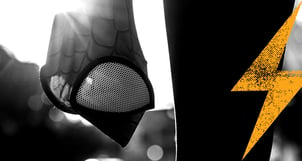
For centuries, storytellers have employed tools to create and understand the Heroes in their narratives. They work tirelessly to define their Hero from the inside out: from their motivations, fears, and desires, to their mannerisms, appearance, and habits. One of the most popular and time-tested tools for character development? Character personas. And they’re one heck of a tool for HR and internal comms pros too.
Think about it: if the role of a brand is to awaken a deep sense of purpose from within the Hero (your employee)... don’t we need to understand them inside and out?
There are many models for character personas out there, including age-old Jungian archetypes and morphogenetic Christ consciousness grids, but our advertising agency has found that you really only need to answer two core questions to understand your Hero:
#1. What Is Your Hero’s Background?
Your typical employee audience member (Hero) will fall into one of these two categories that indicate their status in the world, and therefore their perspective:
- The Regular Jane/Joe Hero: This is a “normal” person caught up in extraordinary circumstances. This Hero is relatable, and watching him/her in action reminds us of ourselves (Think Woody from Toy Story).
- The Larger-Than-Life Hero: This Hero is extraordinary — sometimes seemingly superhuman — but comes with softer sides and vulnerabilities. This Hero is aspirational, and his/her behavior reminds us of who we want to be (Think Buzz Lightyear).
#2. What Do They Desire Most?
In every Heroic journey, the lead character wants something that either they don’t have yet, or they have but might be taken away from them. (This is the story’s conflict.) The Hero spends the majority of the story attempting to get, but just falling short of what he or she wants. Then, the Guide (brand) shows up, and inspires the Hero (employee) to fulfill their destiny:
- To Change: This Hero wants to change the world, their individual circumstances, or themselves.
- To Preserve: This Hero wants to protect the status quo or restore things to the way they were before.
The Four Personas of Hero: Underdog, Survivor, Disruptor, Protector
The intersection of a Hero’s background and their desire is where we uncover the best approach for a brand to communicate with the Hero.
|
Desires |
Regular Jane/Joe |
Larger-Than-Life |
|
To Change |
Underdog |
Disruptor |
|
To Preserve |
Survivor |
Protector |
Underdog: The Regular Jane/Joe Hero That Desires Change
The Underdog is “just like you and me,” but has a deep desire to shake things up.
- Examples in Popular Culture: Harry Potter (an unlikely Hero), Good Will Hunting (a rags-to-riches story) and Lord of the Rings (a David-and-Goliath tale)
- Underdog Brands: Jet Blue, Ally Bank, Planet Fitness
Survivor: The Regular Jane/Joe Hero That Desires Preservation
The Survivor will do whatever it takes to stay alive. They are determined, cunning, and powerhouses of creative willpower.
- Examples in Popular Culture: Jim Lovell in Apollo 13 or Bobby Shatford in The Perfect Storm (human vs. nature), Tom Hanks as Andrew Beckett in Philadelphia (human vs. society)
- Survivor Brands: Volvo, OtterBox, Dashlane
Disruptor: The Larger-Than-Life Hero That Desires Change
A Disruptor is a rebel who will do whatever it takes to change society, overcome odds and defeat tyranny.
- Examples in Popular Culture: Jay Gatsby in The Great Gatsby (idealism), Tris Prior in Divergent (champion of a mission or message)
- Disruptor Brands: Tesla, StitchFix and Smile Direct Club. Apple, in the early 2000s.
Protector: The Larger-Than-Life Hero That Desires Preservation
Protectors are superheroes, though they may not always be supernaturally endowed. They have an explicit desire to rescue or protect the world and those they love in it.
- Examples in Popular Culture: Bruce Willis as Harry Stamper in Armageddon, James Bond (save-the-world epics), Erin Brockovich (revenge stories)
- Protector Brands: BMW, Nike and FedEx
Sometimes the hardest part of an internal comms assignment is clearly defining to whom we are speaking. While we could go about accumulating a large swath of employee data, opportunities can pass us by if we wait. So consider using these four archetypes as a foundation for your brand to understand and communicate with your employees. How can your brand (their Guide) help them fulfill their destiny?
Get more tips and tricks to unlock the power of your brand through magnetic storytelling.


